Handfasting, an ancient Celtic tradition, is experiencing a renaissance in modern weddings, with more and more couples being drawn to its deep symbolism and romantic charm. Rooted in pre-Christian Celtic rituals, it was historically a form of marriage, a physical representation of the couple’s love and commitment to one another. Today, this heartfelt ceremony has worked its way into celebrations of all faiths, beautifully complementing contemporary weddings.
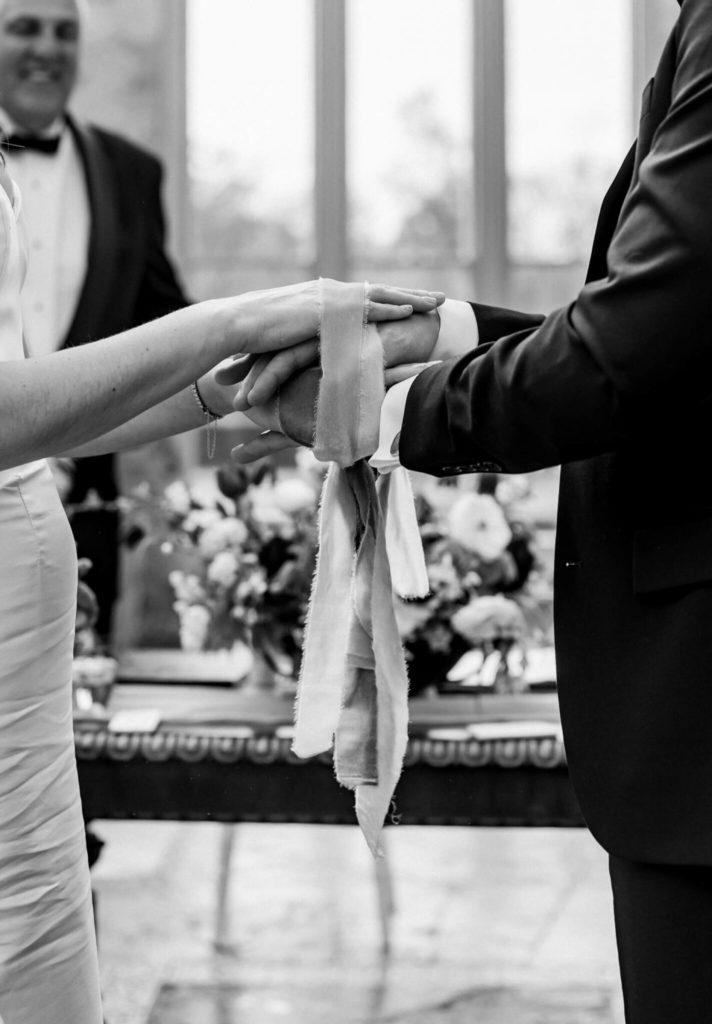 Elaine Barker Photography
Elaine Barker PhotographyHow Do You Do It?
Usually taking place before the exchange of vows, your celebrate or another special person will conduct the tying; Using ribbons, lace, cord, or material that has significance to the couple, the hands of the betrothed are bound together. These ties are the physical representation of their commitment to each other. There are different ways this can be done in a handfasting ceremony. You can link one hand each, or tie both hands using a figure eight to symbolise eternity. The material is looped around the hands of the couple in a particular order, whilst or before they make their vows.
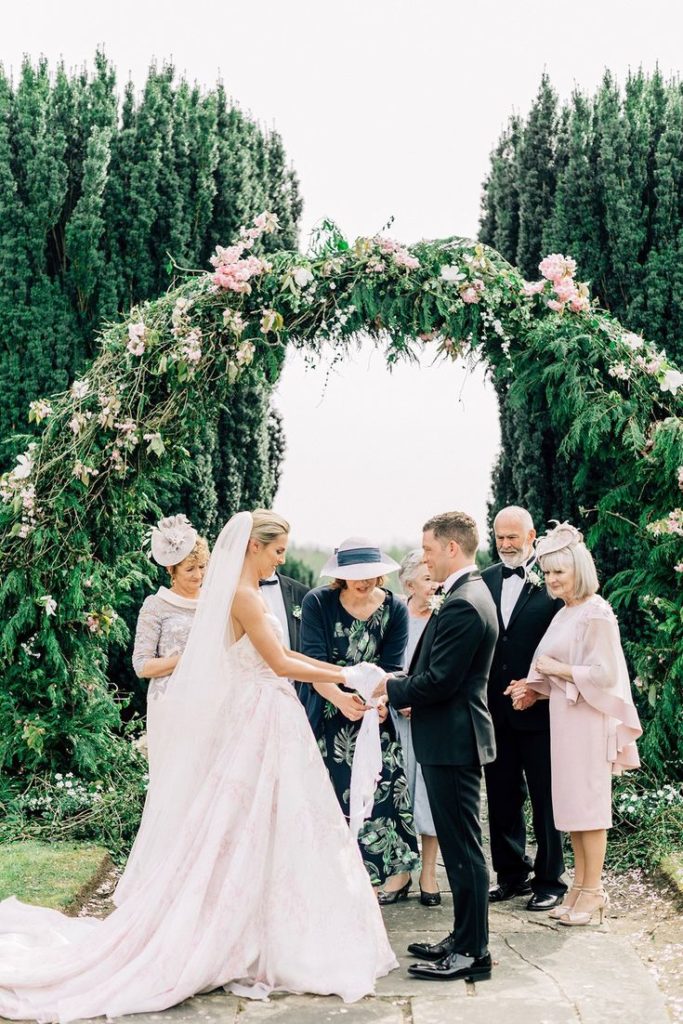 Studio Brown
Studio BrownOne of the most enchanting aspects of handfasting is its flexibility. It can be incorporated into a larger wedding ceremony or stand alone as a private exchange. If you follow tradition then you're meant to stay bound together until midnight on your wedding night, although that can make mingling at your reception a little tricky; some couples choose to have their hands bound for the duration of their vows, while others prefer to have the cords removed after the binding to symbolize freedom within their unity.
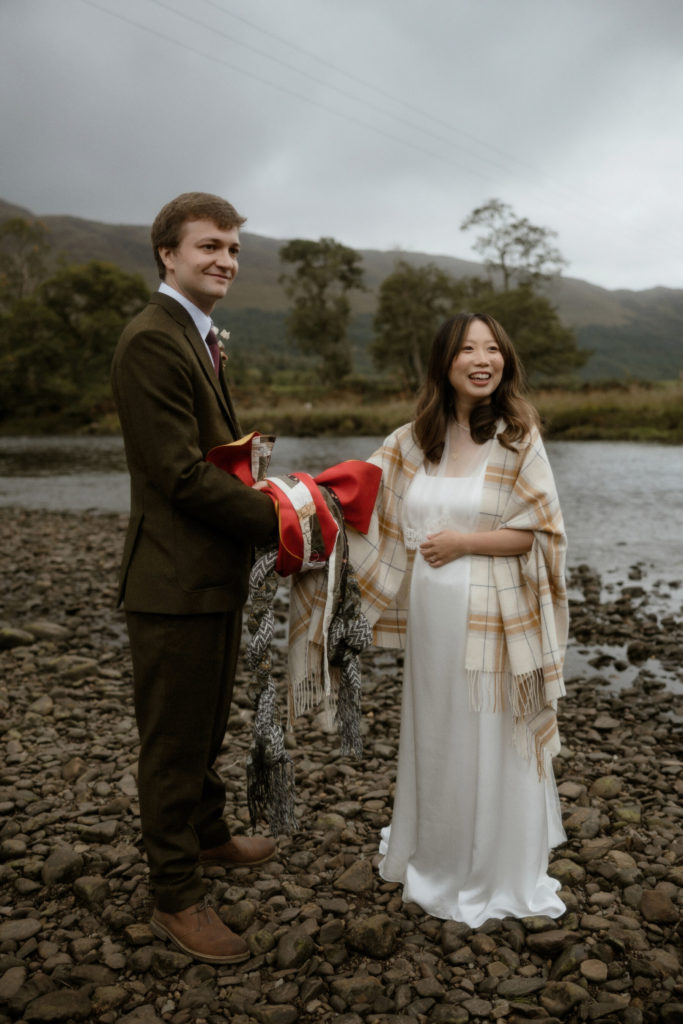 The Kitcheners
The KitchenersTraditionally cord or ribbon was used for the ceremony but as the practice is becoming more popular we're seeing more couples introduce creative alternatives for the binding, like natural garland, vines or flowers woven. Although three cords are the standard for the ceremony, to represent the joining of the two lives into one, we adore the tradition of incorporating more to represent the broader family. Important pieces of fabric are added to symbolise the couple's children, a strip of fabric from a christening gown or baby blanket, the parents, a piece of your mother's wedding dress, or even your found family and friends. The beauty of such ancient traditions is that there's no one way of doing things, the intent and love is what really matters.
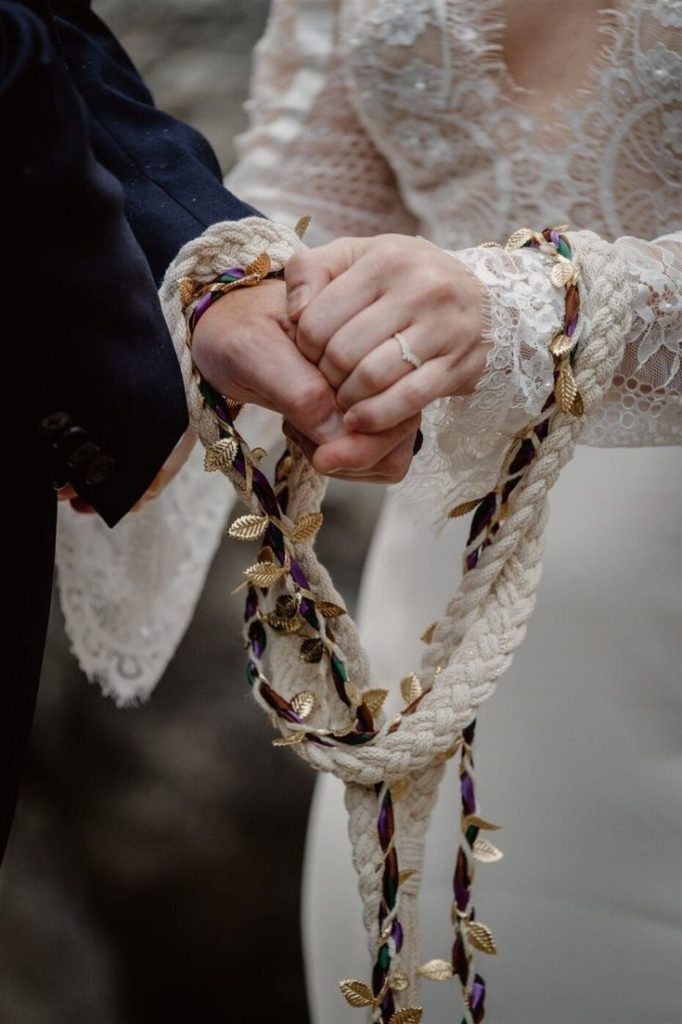 Wild Connections Photography
Wild Connections PhotographyWhy Do You Do It?
The essence of handfasting lies in the symbolic act of binding a couple’s hands together with cords or ribbons, signifying their union. This act of 'tying the knot' is not just a quaint saying; it is a profound gesture that represents the couple's intention to be bound together in love and life. Its timeless appeal lies in its simplicity and the profound message it conveys: a commitment to love and support one another, hand in hand. In a world where weddings are often grand and elaborate, handfasting offers a refreshingly intimate and meaningful alternative, making it a cherished choice for many couples today.
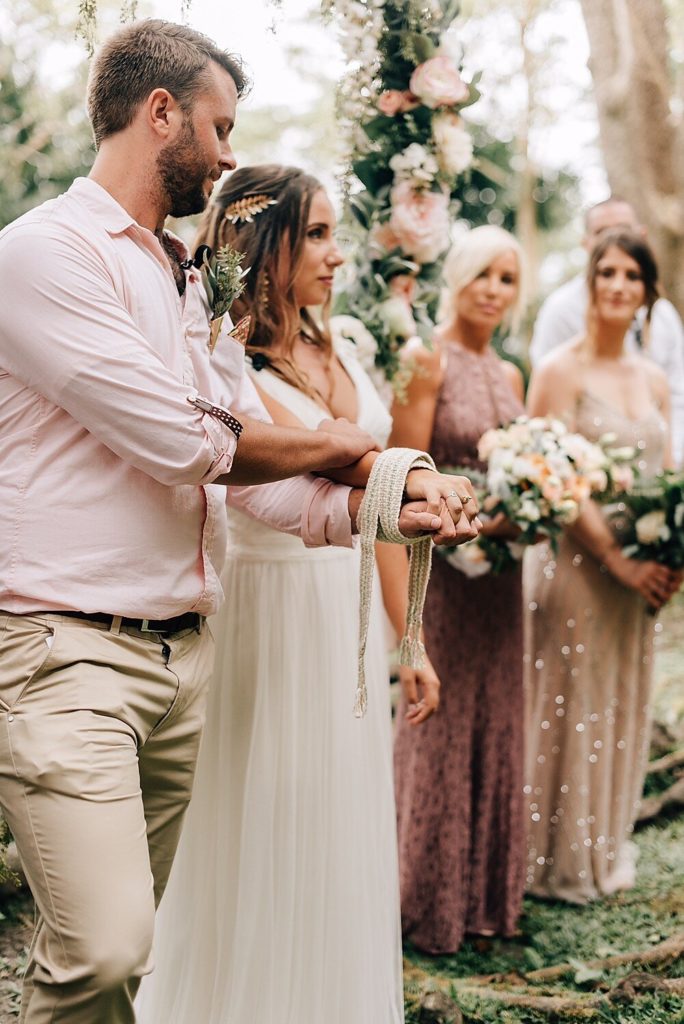
Who Performs It?
Because of its rich history in Irish culture and the ease at which it can be incorporated into a ceremony, it's not hard to find a celebrant in Ireland who isn't willing to add handfasting to your wedding day. However, we've taken the time to seek out a few fabulous people to make your wedding dreams come true.
- Coastal Ceremonies
- Caroline McCarthy
- Celebrant Ireland
- Brian Twomey
- Spiritual Ceremonies
- Bespoke Words
- Hitched By Connie
- Jean Barrett Quinn
- Gráinne

